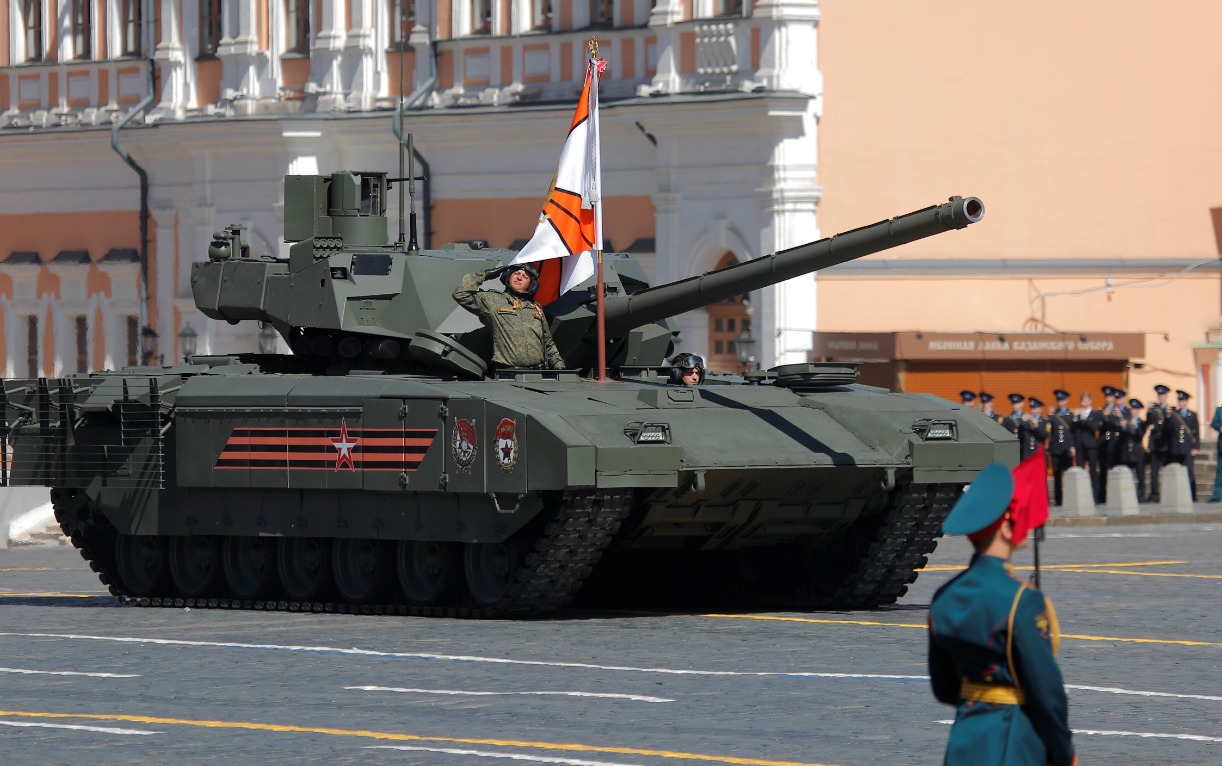Russia's T-14 Armata Tank Looks More and More Like a Failure
In July, the few Armata tanks that were sent to aid Russia’s frontline efforts in Ukraine were allegedly withdrawn from the conflict altogether. Russian state-run news outlet TASS first reported that the MBTs were taken out of the war following their brief stint in combat operations.
For more than a year and a half, heavy sanctions imposed by the U.S. and its North Atlantic Treaty Organization (NATO) allies have unquestionably hit Russia’s defense sector.
Without the materials and monetary means to expand and maintain its military arsenal, Russian forces have lost scores of weapons in its “special military operation” and have been unable to fully restock them.
From main battle tanks (MBTs) to airframes, Moscow’s pre-invasion fleets of inventory have been slashed in half in some cases. The Kremlin is hoping that its ongoing Army 2023 exhibition will lure potential foreign customers to invest in its military equipment and partner with the rogue state amidst the large international boycott it faces.
According to Russian news outlets, more than 1,500 domestic defense enterprises and 85 foreign companies are using this year’s exhibition to showcase new products. The Chief of the Defense Ministry’s Main Innovative Development Department has revealed Russia’s T-14 Armata tank is an impressive product that foreign customers should look out for.
In fact, Osadchuk indicated that the new armored vehicle would demonstrate its capabilities at some point during the exhibition.
Introducing the T-14 Armata
In July, the few Armata tanks that were sent to aid Russia’s frontline efforts in Ukraine were allegedly withdrawn from the conflict altogether. Russian state-run news outlet TASS first reported that the MBTs were taken out of the war following their brief stint in combat operations.
The Armata made its debut appearance in Kyiv this spring when videos depicting a T-14 firing upon Ukrainian positions circulated in May. The introduction of this “cutting-edge” MBT was highly anticipated, especially considering the dismal performance of Moscow’s other tanks throughout the war.
Since February 2022, experts estimate that Russia has lost half of its tank fleet. In fact, Moscow is so short on armored vehicles that it even turned to its antiquated storage piles of Soviet-era MBTs, including the World War II relic T-54.
The Armata played a brief role in Russia’s invasion
The Kremlin often boasts that its new Armata platform is the best of the best and can outperform any near peers. However, obviously, the T-14 Aramata tank has not performed as well as expected since it only lasted two months on the battlefield before being withdrawn altogether.
The Armata was publicly introduced in 2015 when it was showcased during Moscow’s annual Victory Day Parade. By 2020, Russia’s Ministry of Defense announced that the T-14 had been combat-tested in Syria However, following the launch of Russia’s Ukraine invasion in February 2022, the country’s Armata production line ceased.

Perhaps the greatest difference between the T-14 platform and previous Russian MBTs is its unmanned turret. In the Armata, all crew members are positioned in a protected and separated compartment where their survivability is much higher.
As detailed by Military Watch Magazine, “The tank’s frontal base armour protection of over 900mm, paired with Malachit explosive reactive armour and the AFGHANIT active protection system, provides an extreme degree of survivability.

The T-14’s sensors and armaments are also highly prized and major improvements over those of older vehicles, with its Vacuum-1 APFSDS projectiles having an extreme penetrative capability considered sufficient to frontally penetrate any of the vehicles currently in the Ukrainian theatre.”
Maya Carlin, a Senior Editor for 19FortyFive, is an analyst with the Center for Security Policy and a former Anna Sobol Levy Fellow at IDC Herzliya in Israel. She has by-lines in many publications, including The National Interest, Jerusalem Post, and Times of Israel. You can follow her on Twitter: @MayaCarlin.

